A New Take on LEGO Space
/Today’s guest article comes from Kimberly Giffen from around the Seattle area. She is an AFOL, STEM instructor, mom and multiple Best-in-Show winner at BrickCon who wanted to build something a bit far out…
What is Classic Space?
Many LEGO fans feel nostalgia for little minifigs in white, yellow, blue, black, and red space suits. However, this wasn’t the case for girls in the 80s. I was an unusual girl: I had a much-loved castle and Metroliner among the few Paradisa sets I owned. I didn’t have any Classic Space until a friend gave me a bulk lot in 2023. Despite being a fan of science fiction, it didn’t translate into my LEGO creations.
Source: Brickset
I discovered the adult world of LEGO only six years ago. I was a mom who would sit and build with her kids, but the kids would often get bored and leave me to build for the rest of the day. A friend invited me to BrickCon 2018, and I left the show not feeling awe but rather a sense of “Oh, I totally need to get in on this!”
For myself and many women, the challenge of attending a convention lies in our caregiving roles. Leaving my children, aged 12, 7, 4, and 4, for an entire weekend just wasn’t feasible. I waited for the day they would be old enough to attend another convention. In the meantime, I kept building until I joined the AFOL community officially in 2020.
Trying Everything Under the LEGO Sun
My motto when it comes to LEGO is to try everything. Receiving that box of Classic Space items inspired me to explore the space MOC scene. I had built my LEGO reputation on landscapes, architecture, and botanicals. Two of my gardens have won “Best of Show” awards at BrickCon, but Space was not a theme I had tackled. It became a challenge to venture into a whole new area. I had never built rockets, rovers, or mechs—all of these concepts were new and exciting to me.
Sparks of inspiration came from two sources: a spaceship builder who added shipping containers to his colony ships, and dystopian worlds like “Mortal Engines” or “Ready Player One,” featuring housing stacked upon each other. I imagined what it would be like to bring shipping container-style colony housing to other planets.
Source: IGN
In an Earth colony on an alien world, survival would be a priority. Humans would circle the wagons and have a circular unit for defense. We would need to establish our own farms, ensuring the research labs focused on food. The inner space of the colony would center on oxygen and food production, covered by a giant dome. Outside the colony could be a builder’s playground—what do alien life and plants look like? As a garden builder, I could create anything: glowing purple rivers, using all the blue plant parts that don’t get utilized in traditional gardens.
I start all builds with sketches, some prototypes using Stud.io, and extensive Google searches to see what has come before. I wanted this model to acknowledge Classic Space without being Classic Space. A lot of inspiration from other sci-fi IPs uses a very neutral color palette. Choosing colors had to be one of the first design decisions. Dark turquoise was my first choice—who doesn’t love an excuse to buy more dark turquoise bricks? To contrast with dark turquoise, I sought a color on the opposite side of the color wheel. My choices emerged from the orange family. I found orange too bright, dark orange too costly, and settled on medium nougat. Pairing those with neutral colors allowed the plant work to shine.
Designing the Space Colony
Building the colony actually occurred twice. The original plan featured a geodesic dome, which ultimately proved too tall, and the overlap of the container units created excessive shadow. (One must recognize when a design concept is good but cannot be executed properly.) On the next attempt, I focused on making each unit in the colony unique and open, allowing each space to tell its own mini-story. I realized early on that lighting would be essential. The colony was built as a decagon, missing three sides to allow a view into this world as if it were a giant dollhouse.
While the sections are meant to be modular containers, I believed future humans on an alien world would want their homes to be beautiful. Each container featured different design elements, and I adopted an art deco/retro style for the buildings. I also included details designed to bring joy—after all, a space colony absolutely needed a coffee stand.
The underground section had a slightly different feel: more utilitarian, with lots of gray texture. I worked hard to incorporate 80s-era printed parts and elements. One of my labs even displays the classic space logo as a wall mural. If I was going to have mechs and rovers, I needed a place to store and repair them. To create a distinction between the inside and outside, I envisioned a planet without a breathable atmosphere, necessitating airlocks for all areas leading outside.
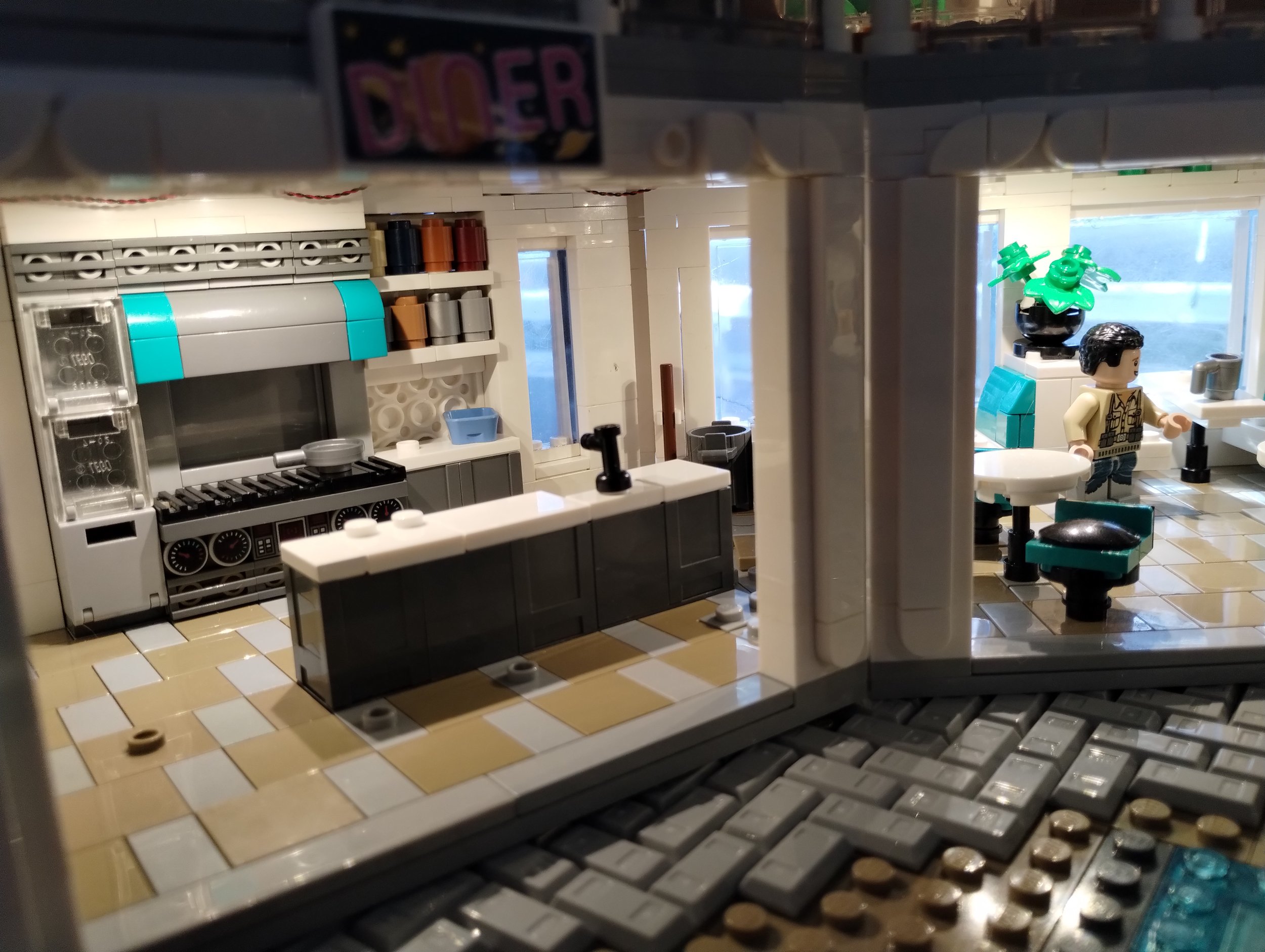
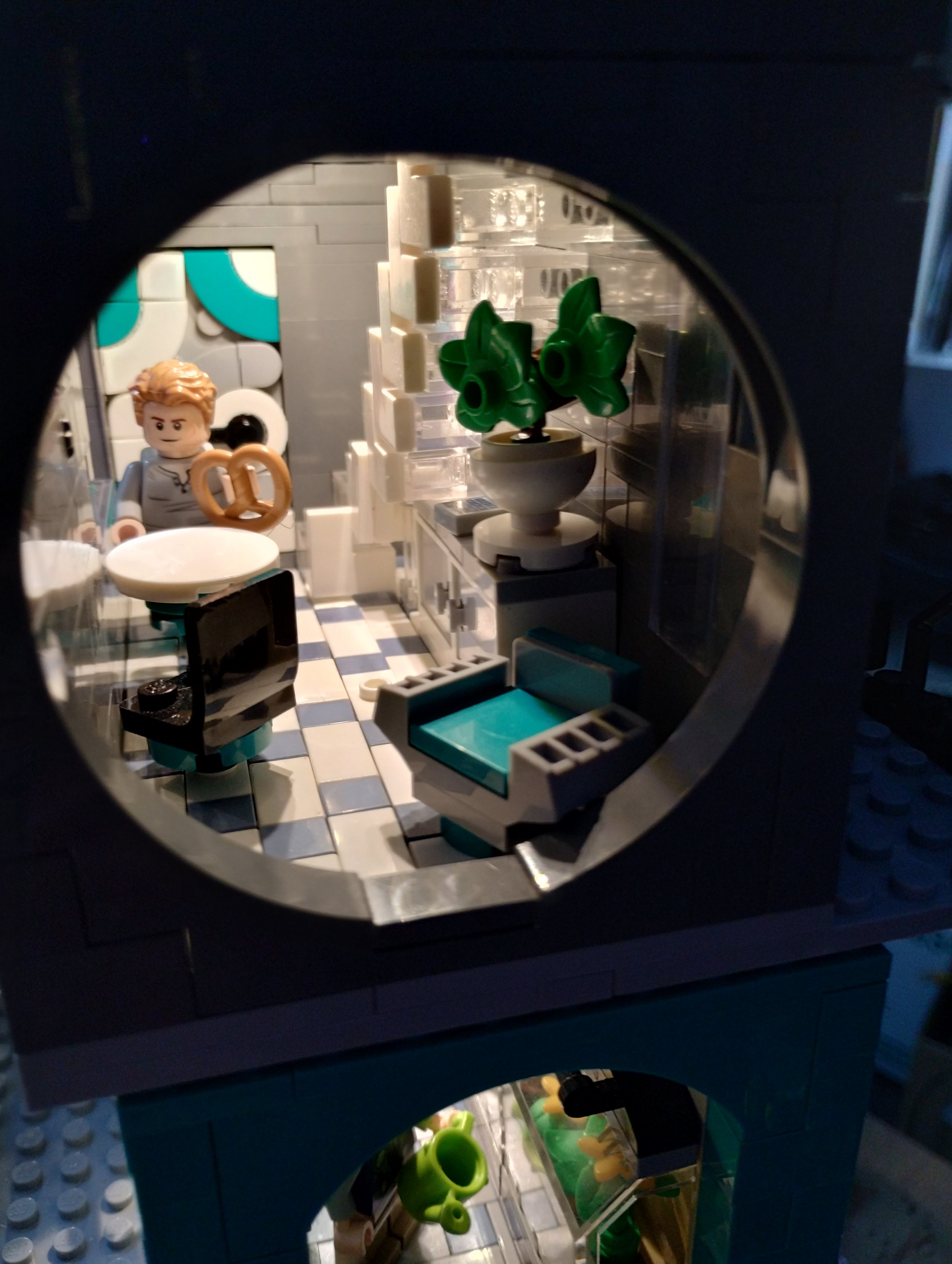
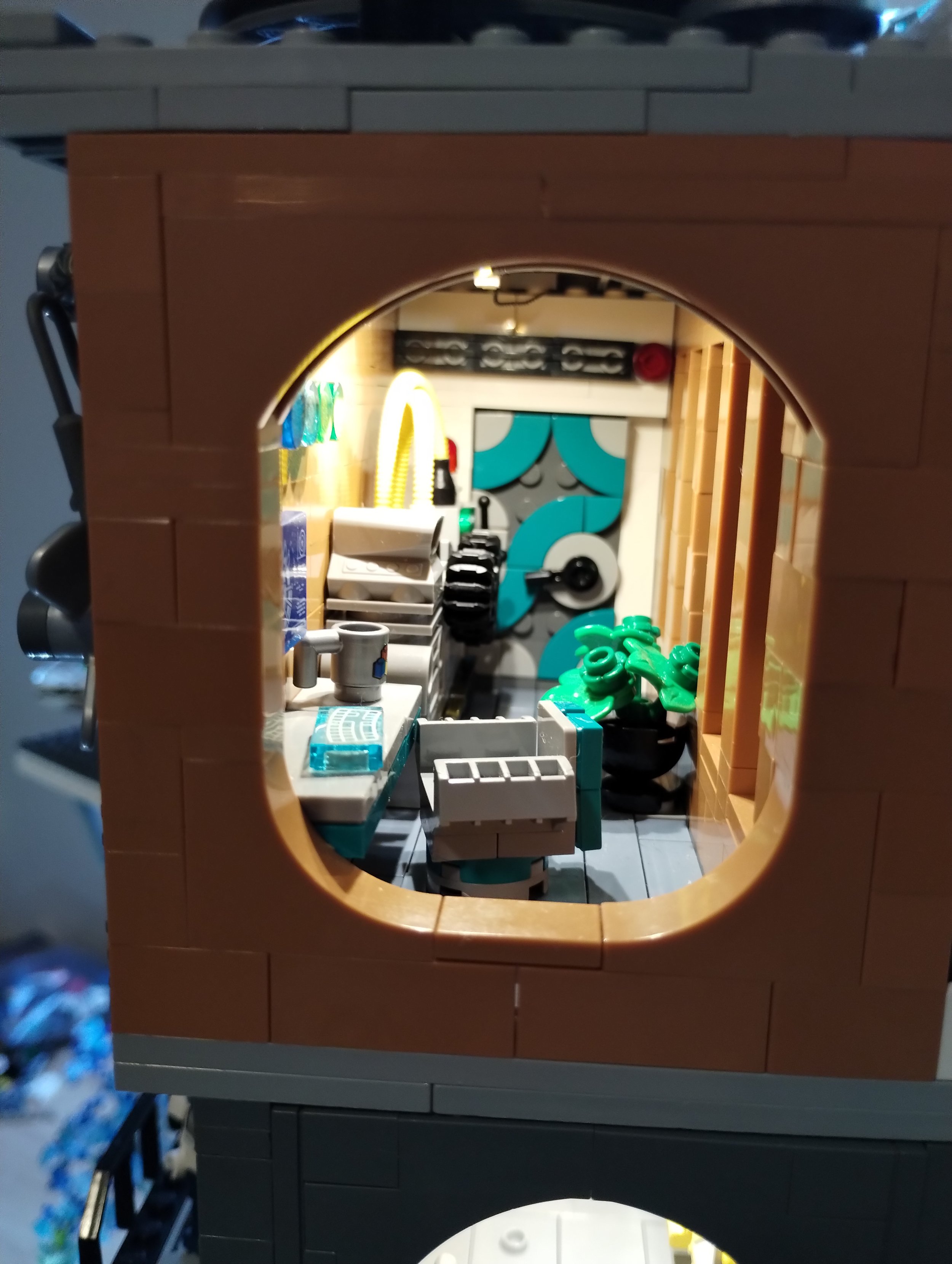
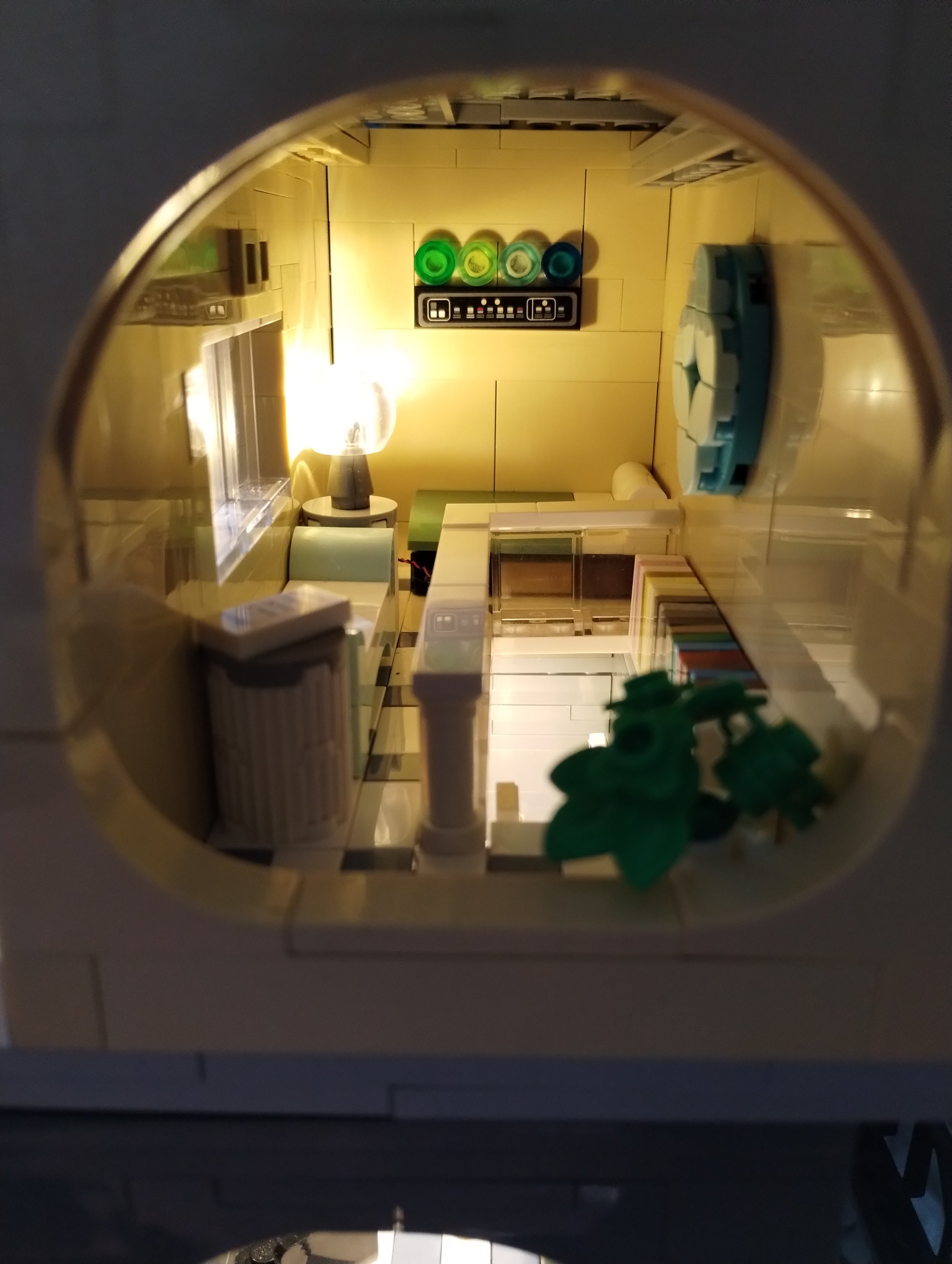
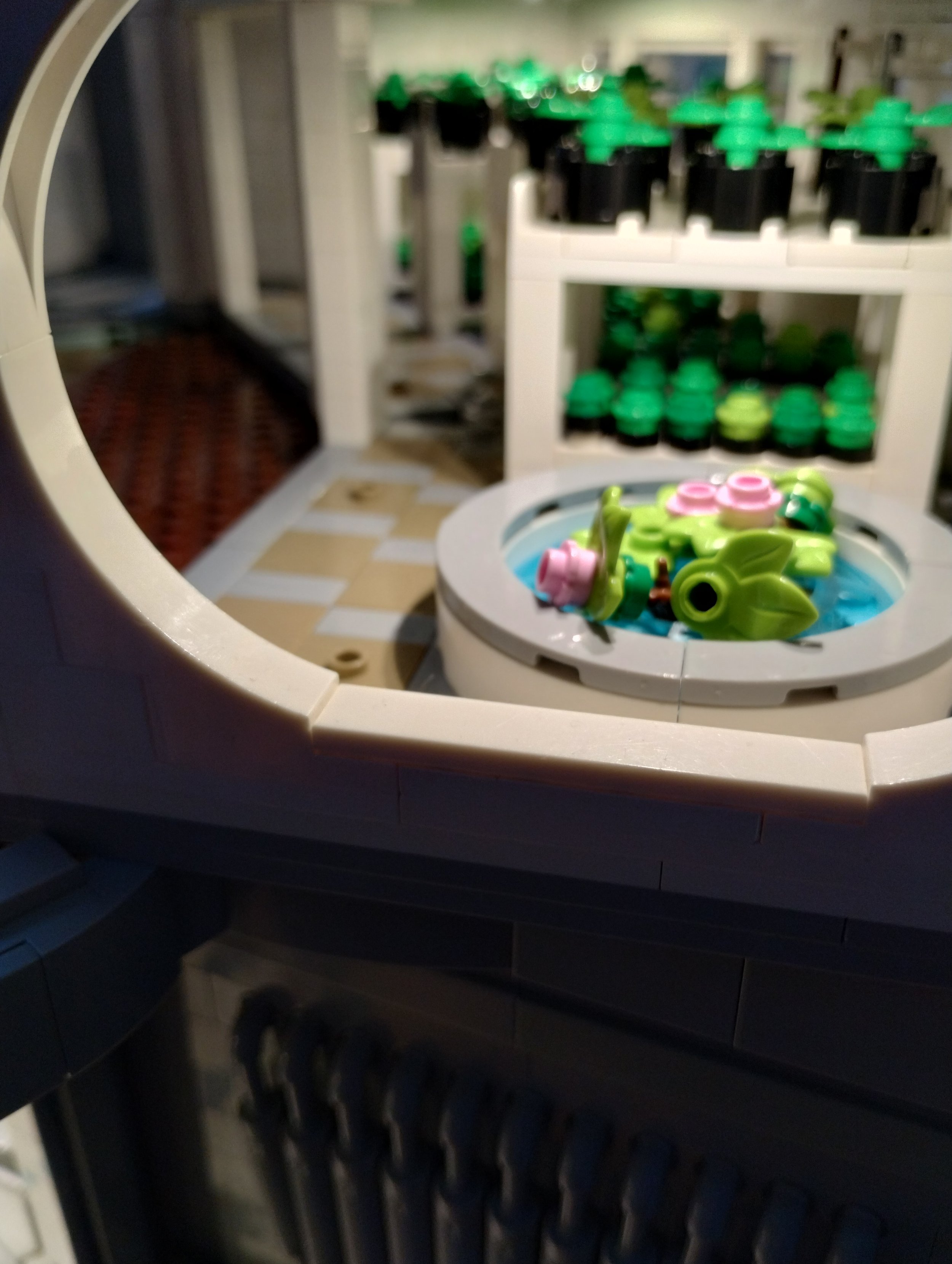
This has been a fantastic year for this type of build. The elements emerging from LEGO DreamZzz and the reboot of LEGO Space across themes have been beneficial. Access to figures outfitted in space gear from BAM (Build a Minifig) and the characters in the Space CMF series have also been a plus.
Lights, Camera, Action!
I know two elements that always bring the wow factor at a LEGO convention: lighting and motion. For the lighting, I devised a plan for which areas would be illuminated, including control panels, mech lights, and glowing features in the river. Part of this plan involved ensuring I could unplug sections and hide wires. The lighting truly made the build shine, especially in low light.
Motion was intriguing; I prefer it to be subtle, so people don’t immediately notice something is moving. I made the motion interactive, allowing any kid who stopped by to operate the Power Functions remote. This let them turn the communications satellite and operate the lift. A working elevator posed one of the biggest challenges in the MOC. I must have tried three methods before finally getting a simple chain drive to work.
More LEGO Space in the Future?
So, does this leave me yearning for more Space MOCs? I would have to say yes and no. Yes, because anything can emerge from your imagination when you think of science fiction. The ability to play with geometry and create alien creatures or worlds without constraints is exhilarating. And no, because deep down, I yearn to build another castle. It has been a few years, and ideas are flowing. I also have never built in the world of pirates, so that’s another new theme for me to explore.
I want to leave you with this advice: try everything. You never know where it will lead, and we can all strive to inspire others while being inspired ourselves.
What LEGO theme have you not built in that you want to? Let us know in the comments below.
Do you want to help BrickNerd continue publishing articles like this one? Become a top patron like Marc & Liz Puleo, Paige Mueller, Rob Klingberg from Brickstuff, John & Joshua Hanlon from Beyond the Brick, Megan Lum, Andy Price, Lukas Kurth from StoneWars, Wayne Tyler, LeAnna Taylor, Monica Innis, Dan Church, Roxanne Baxter, and Steven Laughlin to show your support, get early access, exclusive swag and more.

























